DISTINCT is used to remove duplicate rows in a SELECT statement, which is achieved by comparing the specified column values. Additionally, it can be applied to multiple columns to return a unique combination. It should be noted that DISTINCT only works on the specified column, and the values of other columns may be repeated. When using DISTINCT, appropriate indexes should be established to improve performance, avoid use on large datasets, and alternatives should be considered to optimize queries.

SQL DISTINCT : Deduplication tool and its traps
Have you ever been overwhelmed by the duplicate data in the database? Want to quickly remove redundancy and get a unique value? Then, the DISTINCT keyword is your savior. This article will explore in-depth the usage of DISTINCT and some details that are easily overlooked, making you a master of database query.
Let's start with the most basic one: DISTINCT is used to remove duplicate lines in SELECT statements. Imagine you have a table with user purchase records that contain user ID, product ID, and purchase date. If you just want to see what different items you have purchased, DISTINCT can come in handy:
<code class="sql">SELECT DISTINCT product_id FROM purchases;</code>
This concise SQL statement returns a list containing only unique product IDs, ignoring duplicate entries. This may seem simple, but in practical applications, the efficiency and behavior of DISTINCT may be more complicated than you think.
How does DISTINCT work? The database engine scans the result set and compares it based on the column you specified (here is product_id ). If you find that the values of two rows in the specified column are exactly the same, it will only retain one row and the others will be discarded. This means that the performance of DISTINCT is closely related to the columns you choose and the database index. If your table is not indexed on product_id column, then DISTINCT 's query may be slow, especially on large tables. Therefore, it is crucial to establish the right index!
Let's take a look at more advanced usage. You can use multiple columns with DISTINCT at the same time:
<code class="sql">SELECT DISTINCT user_id, product_id FROM purchases;</code>
This returns the only user-product combination, for example, User 1 purchases item A and User 2 purchases item A will be considered different combinations. Note that "unique" here means that the combination of all specified columns must be unique, not a single column unique.
Now, let's talk about traps. A common misconception is that DISTINCT can be applied to the entire row. In fact, DISTINCT only works on the columns listed in the SELECT statement. Values of other columns may appear repeatedly in the result, depending on the specific implementation of the database.
Another potential problem is performance. For extremely large data sets, DISTINCT can be very time-consuming. In this case, you may want to consider other optimization strategies, such as pre-creating views with unique values, or using more advanced database techniques such as window functions.
Finally, some experiences:
- Indexing is important: indexing on columns that use
DISTINCTfrequently can significantly improve query speed. - Use with caution: Before using
DISTINCTon large datasets, carefully evaluate its performance impact. Consider using alternatives, such as grouped aggregate functions. - Understand its behavior: Remember that
DISTINCTonly works on the specified columns, and the values of other columns may be repeated.
I hope this sharing can help you better understand and use DISTINCT , avoid common pitfalls, and improve your SQL skills. Remember, mastering SQL is not achieved overnight. Only by practicing and thinking more can you become a real database master.
The above is the detailed content of sql distinct usage sharing of distinct function in sql. For more information, please follow other related articles on the PHP Chinese website!
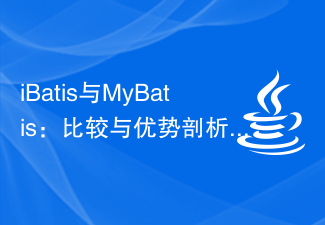 iBatis与MyBatis:比较与优势剖析Feb 18, 2024 pm 01:53 PM
iBatis与MyBatis:比较与优势剖析Feb 18, 2024 pm 01:53 PMiBatis和MyBatis:区别和优势解析导语:在Java开发中,持久化是一个常见的需求,而iBatis和MyBatis是两个广泛使用的持久化框架。虽然它们有很多相似之处,但也有一些关键的区别和优势。本文将通过详细分析这两个框架的特性、用法和示例代码,为读者提供更全面的了解。一、iBatis特性:iBatis是目前较为老旧的持久化框架,它使用SQL映射文件
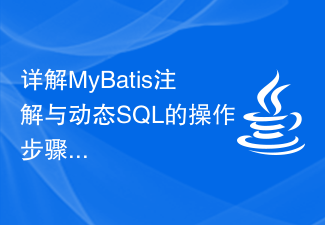 详解MyBatis注解与动态SQL的操作步骤Feb 18, 2024 pm 03:29 PM
详解MyBatis注解与动态SQL的操作步骤Feb 18, 2024 pm 03:29 PMMyBatis注解动态SQL的使用方法详解IntroductiontotheusageofMyBatisannotationdynamicSQLMyBatis是一个持久层框架,为我们提供了便捷的持久化操作。在实际开发中,通常需要根据业务需求来动态生成SQL语句,以实现灵活的数据操作。MyBatis注解动态SQL正是为了满足这一需求而设计的,本
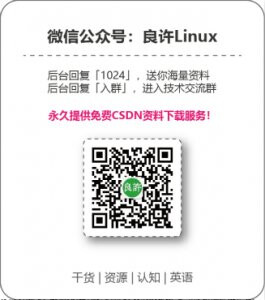 Linux性能调优~Feb 12, 2024 pm 03:30 PM
Linux性能调优~Feb 12, 2024 pm 03:30 PMLinux操作系统是一个开源产品,它也是一个开源软件的实践和应用平台。在这个平台下,有无数的开源软件支撑,如apache、tomcat、mysql、php等。开源软件的最大理念是自由和开放。因此,作为一个开源平台,linux的目标是通过这些开源软件的支持,以最低廉的成本,达到应用最优的性能。谈到性能问题,主要实现的是linux操作系统和应用程序的最佳结合。一、性能问题综述系统的性能是指操作系统完成任务的有效性、稳定性和响应速度。Linux系统管理员可能经常会遇到系统不稳定、响应速度慢等问题,例如
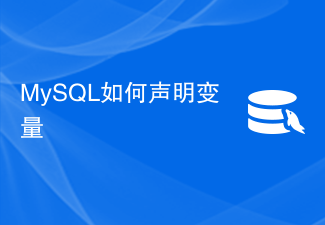 MySQL如何声明变量Feb 18, 2024 pm 01:53 PM
MySQL如何声明变量Feb 18, 2024 pm 01:53 PMMySQL是一种常用的关系型数据库管理系统,它支持变量的定义和使用。在MySQL中,我们可以使用SET语句来定义变量,并使用SELECT语句来使用已定义的变量。下面将通过具体的代码示例来介绍如何在MySQL中进行变量的定义和使用。首先,我们需要连接到MySQL数据库。可以使用以下命令连接到MySQL数据库:mysql-u用户名-p密码接下来,我们可以
 如何解决 Golang 中的错误“ORA-00911:无效字符”?Feb 08, 2024 pm 09:39 PM
如何解决 Golang 中的错误“ORA-00911:无效字符”?Feb 08, 2024 pm 09:39 PM我在调用以下函数时遇到错误“ORA-00911:无效字符”。如果我使用带有硬编码值的SQL查询(截至目前,它已在下面的代码片段中注释掉),那么我可以在邮递员中以JSON响应获取数据库记录,没有任何问题。所以,看起来我的论点做错了。仅供参考,我正在使用“github.com/sijms/go-ora/v2”包连接到oracledb。另外,“DashboardRecordsRequest”结构位于数据模型包中,但我已将其粘贴到下面的代码片段中以供参考。请注意,当我进行POC时,我们将使用存
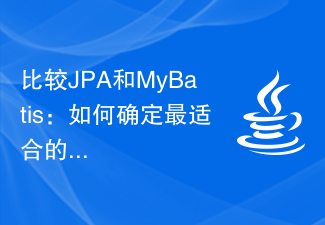 比较JPA和MyBatis:如何确定最适合的持久化框架?Feb 18, 2024 pm 02:12 PM
比较JPA和MyBatis:如何确定最适合的持久化框架?Feb 18, 2024 pm 02:12 PMJPAvsMyBatis:如何选择最佳的持久化框架?引言:在现代软件开发中,使用持久化框架来处理数据库操作是必不可少的。JPA(Java持久化API)和MyBatis是两个常用的持久化框架。然而,如何选择最适合你的项目的持久化框架是一个具有挑战性的任务。本文将分析JPA和MyBatis的特点,并提供具体的代码示例,帮助你做出更明智的选择。JPA的特点:J
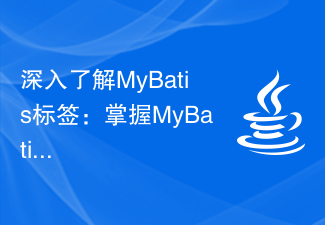 深入了解MyBatis标签:掌握MyBatis常用标签的功能和用法Feb 18, 2024 pm 03:43 PM
深入了解MyBatis标签:掌握MyBatis常用标签的功能和用法Feb 18, 2024 pm 03:43 PMMyBatis标签详解:掌握MyBatis中各种常用标签的功能与用法,需要具体代码示例引言:MyBatis是一个强大且灵活的Java持久化框架,广泛应用于Java开发中。了解MyBatis标签的功能和用法对于使用MyBatis进行数据库操作非常重要。本文将详细介绍MyBatis中几个常用的标签,并提供相应的代码示例。一、select标签select标签用于执
 深入探索Go语言开源项目的无限潜力:五个项目概要值得留意Jan 30, 2024 am 10:48 AM
深入探索Go语言开源项目的无限潜力:五个项目概要值得留意Jan 30, 2024 am 10:48 AM近年来,Go语言在软件开发领域的应用越来越广泛,吸引了众多开发者的关注和参与。Go语言以其高效的性能、简洁的语法和强大的并发特性,成为了许多开发者的首选语言。在Go语言的生态系统中,开源项目扮演着非常重要的角色,为开发者提供了各种优秀的工具和库。本文将概述五个值得关注的Go语言开源项目,以展示Go语言在软件开发领域的无限潜力。GinGin是一个基于Go语言的


Hot AI Tools

Undresser.AI Undress
AI-powered app for creating realistic nude photos

AI Clothes Remover
Online AI tool for removing clothes from photos.

Undress AI Tool
Undress images for free

Clothoff.io
AI clothes remover

AI Hentai Generator
Generate AI Hentai for free.

Hot Article

Hot Tools

Zend Studio 13.0.1
Powerful PHP integrated development environment

Dreamweaver CS6
Visual web development tools

EditPlus Chinese cracked version
Small size, syntax highlighting, does not support code prompt function

ZendStudio 13.5.1 Mac
Powerful PHP integrated development environment

SublimeText3 Linux new version
SublimeText3 Linux latest version








